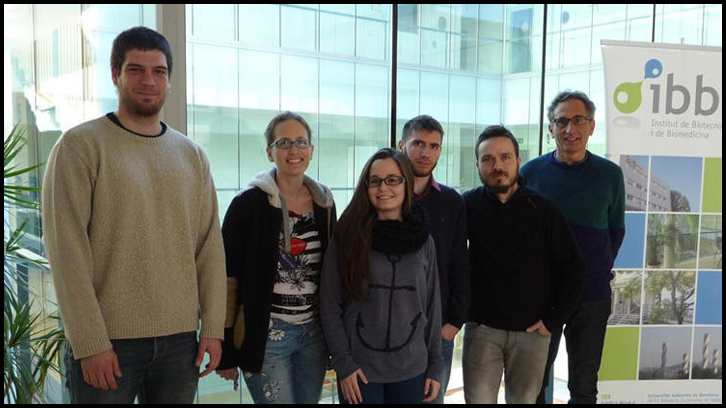First map of adaptation and the natural selection of the complete anatomy of an embryo

The theory of the evolution of Charles Darwin proposes that the adaptations of organisms arise because of the process of natural selection. The fascinating structures, functions or complex behaviors of living beings result from the survival and differential reproduction that they give to the carrier organisms. Darwin could hardly have imagined that one of the most striking examples of the power of natural selection would come from the analysis of genomic sequences. Natural selection leaves a characteristic mark in the patterns of genetic variation that can be detected by means of sophisticated theoretical and statistical methods of genomic analysis. Today we can infer the action of natural selection in the genome and even quantify what proportion of the genetic variants that a species incorporates are adaptive, consequences of natural selection. In a previous work published in the journal Nature (see review), the authors drew the first high-resolution map of the natural selection of a genome and demonstrated that natural selection is ubiquitous, pervasive in the genome of the fruit fly D. melanogaster. Between 30 and 50% of the mutations that are incorporated into the genome of this species are adaptive, refuting the previous view supported by the neutral theory of the genetic evolution of the Japanese Motoo Kimura, which proposed that the vast majority of mutations that differentiate the species are selectively neutral, with no adaptive value.
Natural selection acts primarily on the phenotypic properties of organisms and only, to the extent that these properties are heritable, does it act secondarily on the genotype. The genomic revolution has led to the current paradoxical situation in which we have more information on selection in the genome than on the phenotype of the organism. No previous study has studied the action of the selection in the whole phenotype of an organism nor has it integrated both levels of selection on a genomic scale. The objective of this work was precisely to carry out this global selection-phenotype-genotype integration, specifically to draw an exhaustive map of the selection that acts on the complete embryonic anatomy of the species D. melanogaster. We started with three layers of omics information that had been obtained and analyzed for different purposes and that we were now to integrate. The first layer is the genomic variation data in D. melanogaster that we had previously analyzed demonstrating the omnipresence of the selection. On the other hand, the Berkeley Drosophila Genome Project (BDGP) had generated a database of gene expression with two sources of information: (i) expression levels during embryogenesis of eight thousand genes using the technique of high-throughput RNA in situ hybridization and (ii) accurate information on the anatomical regions where the genes were expressed, compiled in more than 120,000 photographs. They were categorized into 18 anatomical terms such as nervous system, germ line, epidermis, circulatory system... throughout six stages of embryonic development.
Over these three layers of information we pose the following questions, what is the anatomical correlate of all the evidence of selection detected in the genome?, that is, is the molecular adaptation randomly distributed with respect to different traits such as organs or morphological parts of the body? Are there some anatomical structures with higher rates of evolution than others are? In order to construct a map of the adaptation on the complete anatomy of the embryo we start from the simplifying assumption that the phenotypic adaptation (anatomical in our case) can be inferred from the adaptation of the genes that are expressed in the different body parts. From the first layer, the genomic one, we obtained variation data of all the genes for which information was available and we quantified that selection, both adaptive and purifying, acting on each one of them. In this way we were able to assign to each position of the embryonic space or morphological structure the average value of selection of genes expressed there, obtaining a heat map of the positive and negative selection in the embryonic space. It was possible to collect data on genetic variation, gene expression and embryo localization of approximately 5,000 genes.
The selection map over the embryo of D. melanogaster indicated that the organs derived from the ectoderm are subject to selective constraint, specifically the nervous system and digestive system. The organs derived from mesoderm undergo a greater adaptive selection, specifically, the gonads and the immune system. Finally, it was observed that genes that are expressed in one or a few different anatomical structures are younger and have higher rates of evolution, unlike genes that are expressed in all or almost all structures.
Outline of the approach used to map the adaptation and natural selection in the complete anatomy of an embryo that integrates genome variation, gene expression data and spatial and temporal information of embryonic development
This work has been published this month in the prestigious journal Molecular Biology and Evolution.
Institut de Biotecnologia i Biomedicina (IBB)
Universitat Autònoma de Barcelona
References
Mapping selection within Drosophila melanogaster embryo’s anatomy. 2017. Irepan Salvador-Martínez Marta Coronado-Zamora David Castellano, Antonio Barbadilla, Isaac Salazar-Ciudad. Molecular Biology and Evolution, msx266, https://doi.org/10.1093/molbev/msx266
(5 Year Impact Factor: 14.558)


